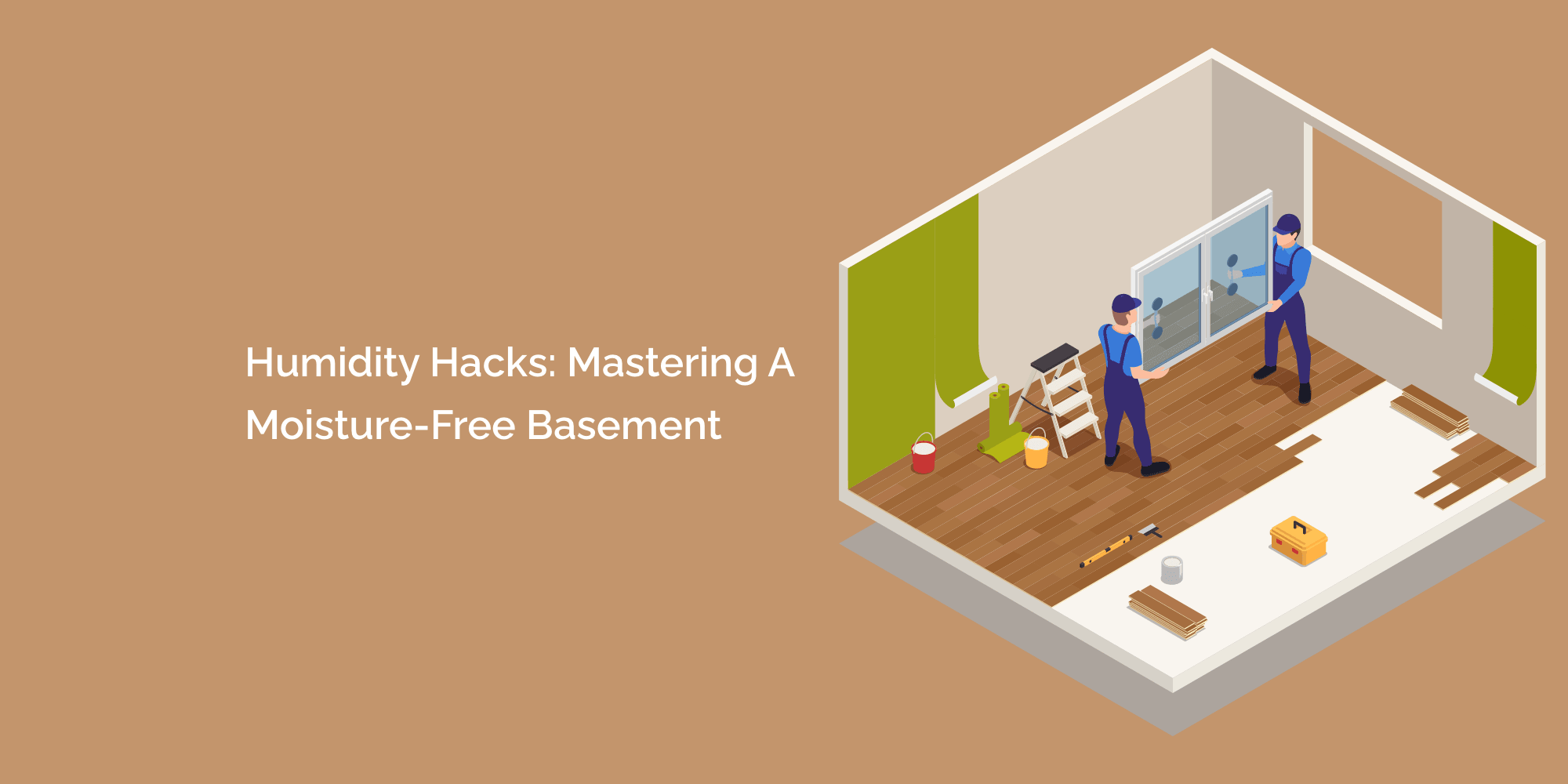Humidity can be a persistent issue in basements, leading to unpleasant odors, mold growth, and damage to belongings. However, with the right strategies and hacks, you can master a moisture-free basement. This comprehensive blog will explore techniques and tips to help you banish humidity and create a dry, comfortable, and healthy basement environment. By implementing these moisture control measures, you can transform your basement into a functional and enjoyable space.
Identifying the Causes of Basement Humidity
- Understanding the common causes: Before tackling the humidity issue, it is crucial to identify the root causes. Familiar sources of basement humidity include water leaks, inadequate ventilation, improper drainage, and groundwater seepage. Assess your basement thoroughly to pinpoint the specific sources of moisture.
- Inspecting for water leaks: Look for signs of water leaks, such as water stains, damp spots, or musty odors. Check plumbing fixtures, pipes, and basement walls for any signs of leakage. Promptly address and repair any identified leaks.
- Examining drainage systems: Assess the effectiveness of your basement's drainage systems. Clear gutters and downspouts to ensure water is directed away from the foundation. Evaluate the grading around your home and consider if necessary to prevent water from pooling near the basement walls.
Enhancing Basement Ventilation
- Improving natural ventilation: Maximize natural ventilation by opening windows and doors when weather conditions allow. This helps to exchange humid indoor air with fresh outdoor air. Place fans strategically to facilitate airflow.
- Installing exhaust fans: Install exhaust fans in areas prone to moisture, such as near laundry facilities, bathrooms, or kitchens if present in the basement. These fans will help remove excess humidity and improve air circulation.
- Utilizing dehumidifiers: Consider using dehumidifiers to remove moisture from the air effectively. Opt for energy-efficient models and position them in critical areas of the basement. Regularly empty and clean the dehumidifier to maintain its efficiency.
Insulation and Moisture Barriers
- Sealing cracks and gaps: Inspect basement walls and floors for damages or holes. Use caulk or appropriate sealants to fill these openings and prevent moisture intrusion.
- Installing vapor barriers: Vapor barriers act as a moisture barrier, preventing water vapor from entering the basement. Install vapor barriers on the interior walls of the cellar to inhibit moisture penetration. Consult a professional to determine the most suitable type of vapor barrier for your basement.
- Insulating pipes: Insulating basement pipes prevent condensation and reduce humidity levels—wrap pipes with insulation sleeves to keep them dry and minimize the potential for moisture buildup.
- Waterproofing the basement: Consider waterproofing the basement walls to create an additional layer of protection against moisture. Various waterproofing products, such as paints, sealants, and coatings, can help safeguard your basement from water intrusion.
Managing Water Drainage
- It ensured proper gutter maintenance: Regularly clean gutters and downspouts to prevent clogs and ensure adequate water flow. This helps direct water away from the foundation, reducing the risk of water seepage into the basement.
- Improving landscape grading: Properly slope the landscape away from the foundation to promote efficient water runoff. This prevents water from pooling near the basement walls and minimizes the chances of moisture infiltration.
- Extending downspouts and redirecting water: Extend downspouts away from the foundation and direct them towards areas with proper drainage. This ensures that water is effectively directed away from the basement, minimizing the risk of water seepage.
Certainly! Here are some frequently asked questions (FAQs) related to mastering a moisture-free basement:
Why is humidity a problem in basements?
Basements are often prone to humidity issues due to their below-ground level, limited ventilation, and potential for moisture intrusion. This can lead to condensation, mold growth, and unpleasant odors.
How do I know if my basement has a humidity problem?
Signs of a humidity problem in the basement include musty odors, condensation on windows or walls, visible mold or mildew growth, and a general feeling of dampness. High humidity levels can also cause damage to furniture, books, and electronics.
What are the common causes of basement humidity?
Common causes of basement humidity include water leaks from plumbing or foundation cracks, inadequate ventilation, poor drainage, and groundwater seepage. Identifying the specific cause is crucial for implementing effective solutions.
Conclusion
By implementing the strategies and hacks outlined in this blog, you can master a moisture-free basement. Proper identification of the causes of humidity, enhancing ventilation, insulating and using moisture barriers, managing water drainage, controlling indoor humidity, maintaining optimal temperature, and conducting preventive maintenance is critical to banishing humidity. With a dry and comfortable basement, you can enjoy a space free from musty odors, mold growth, and moisture-related damage.








